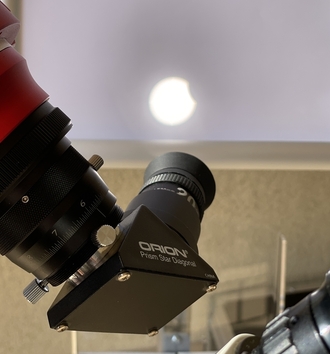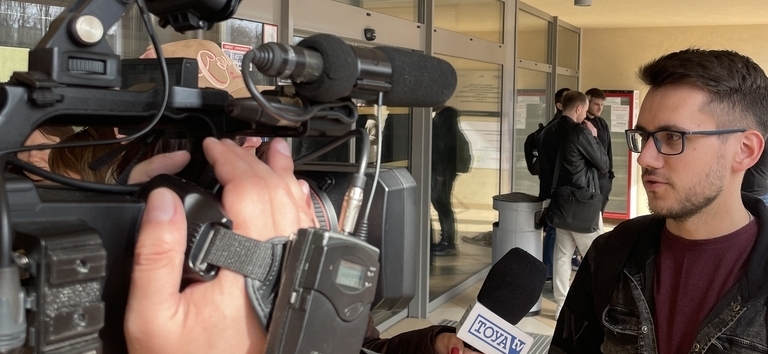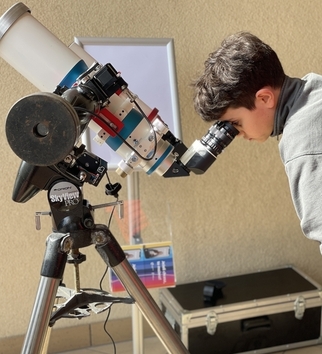The Department of Astrophysics provided professional optical equipment to observe the Sun in different bands:
- The Coronado PST telescope with H-alpha filter allowed observations of protuberances and the structure of the photosphere,
- A 10 cm aperture refractor with a solar filter allowed accurate observation of sunspots,
- A 6 cm aperture refractor with eyepiece projection allowed safe observation of the eclipse by projecting the image onto a screen.
Despite the light cloudiness, the observation conditions were favourable, and the maximum phase of the eclipse, amounting to a dozen or so percent, allowed for capturing important details of this phenomenon. The joint observation became an opportunity to popularise astronomy and integrate the academic community with science enthusiasts.
A solar eclipse is an incredibly fascinating astronomical phenomenon, the observation of which allows us to better understand the dynamics of the Solar System. Dr. hab. Andrzej Śmiałkowski, Associate Professor at the University of Lodz, talks about its significance:
Solar eclipses are not only a spectacular show, but also a great opportunity to observe the activity of our star. Interestingly, the day before this eclipse, there was a strong explosion on the Sun from the area of the sunspot, which is perfectly visible through our telescopes. Such eruptions release huge amounts of plasma and radiation, which can affect the Earth's magnetosphere and cause auroras even at our latitudes. However, they can also cause disruptions in telecommunications and satellite failures. We need to observe the activity of our Sun to also be better prepared for potential damage.
Coverage of the event can be seen on TOYA TV.
The next partial solar eclipse visible in Poland will take place on 12 August 2026 and will be much deeper – at the moment of sunset, its disk will be largely obscured. We already encourage you to follow this unique phenomenon!




